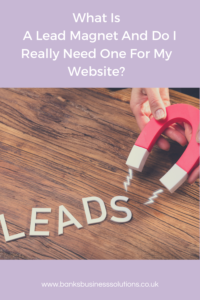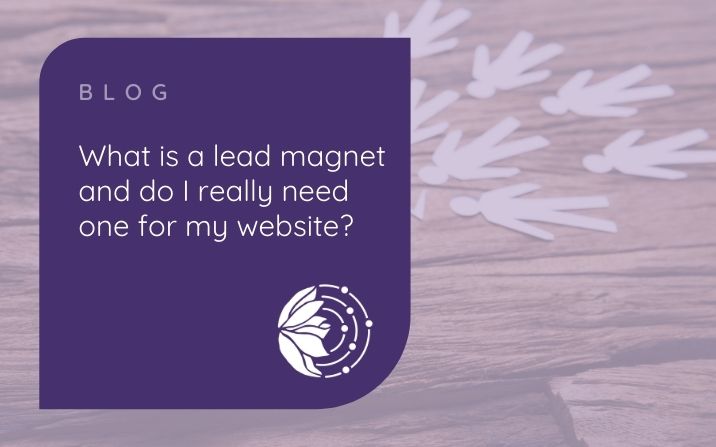What Is A Lead Magnet And Do I Really Need One For My Website?
Acquiring traffic to your website is just the first step in converting visitors into paying customers but it’s also the one where most business owners miss out on gaining valuable new leads.
According to the marketing industry, it takes around eight touchpoints with a potential new customer for them to become a client. A touchpoint is how many times they come into contact with you and it might be seeing a social media post, visiting your website, spotting a Facebook ad, etc. Very few people will see you and buy from you straight away, they need to see proof of your credibility and that you’re the right solution for them first. 
The problem I often find when I’m asked to help business owners with their website and email marketing is that they believe the process ends with visiting the website rather than seeing it as the beginning of a conversion process.
And that’s how a lead magnet can help.
What is a lead magnet?
A lead magnet is an offering on your website (can be through social media) where you give your audience something in return for their contact details. Common examples include:
- Free downloadable worksheet
- Free webinar
- Industry report or “white paper” for your email address
You’re bound to have seen various lead magnets on different websites and probably signed up for a few of them!
A lead magnet works well at capturing the details of people who are interested enough to visit your website and check out what you do but aren’t ready to commit to buying from you yet. By adding them to a mailing list and keeping in regular contact with your email marketing, you’re creating those additional touchpoints needed to create the reassurance they’re looking for.
Can I still ask for email addresses with GDPR?
Yes. GDPR itself doesn’t prohibit you from collecting email addresses but there are a few processes to follow to make sure you’re doing so legally.
You need to make it clear why you’re collecting the email address and what you’ll be using it for so they can give full consent to this, i.e. “your email address will be added to a subscriber list to receive regular email newsletters and will not be sold to third parties or used for any other purpose”. Using a double opt-in to reiterate this information is a good way of proving you’ve done this.
You need to provide a link to your GDPR policy which details how the information will be used, stored and how they can access it.
They shouldn’t be forced to give consent to the mailing list to receive the lead magnet. Most people are happy to give their email address in return for something useful to them and their business, but this cannot be mandatory, i.e. a pre-filled checkbox they cannot untick. Specific consent to be added to a mailing list is required before you can use their details for anything other than sending them the lead magnet.
You need to make it easy for them to unsubscribe from your mailing list at any time.
For more information on GDPR, take a read of my blog on getting started with GDPR preparation for some helpful tips and reminders.
Remember that a lead magnet is the start of your sales funnel
Now you’ve got their interest and the details to stay in touch with them, you need to put the hard work in to convince them that you’re the one to be buying from.
If you remember my blog about sales funnels, there are 5 stages for your leads to travel through from visitor to paying customer:
- Awareness
- Interest
- Evaluation
- Decision
- Purchase
Your lead magnet comes in at number 2 – they’re interested enough to give you their details. So now you need to provide the information and proof they’re looking for to evaluate your services/products and decide to buy them.
You can do this with your email marketing list by sharing case studies, testimonials, hints and tips, your blogs, industry news, etc. Curate together the information you have that shows you’re good at what you do and can help them, and deliver it straight to their inbox.
I do recommend that you don’t bombard them too much. A short weekly email that gets straight to the point and isn’t too salesy can work well, or a monthly roundup newsletter with a couple of different links. What I don’t suggest is sending email after email, day after day until they agree to buy – I get those kinds of emails all the time and the only thing it makes me want to do is to hit the unsubscribe button!
A lead magnet can be a fantastic way to improve your conversion rates and win more clients, and I hope you’ll give it a try with your business website soon! Do get in touch with me if you have any questions, need some ideas or are concerned about GDPR.

